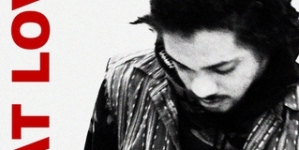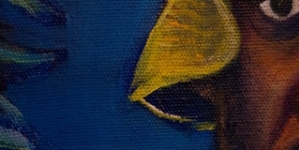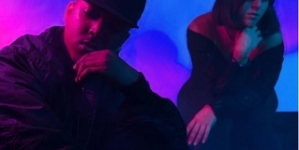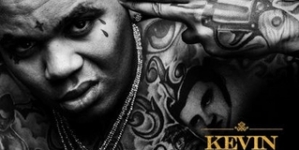-
Coming Straight From Austin Texas With New Single “Pretend” - January 9, 2021
-
Travis Scott Releases His First Single of 2019 [VIDEO] - October 4, 2019
-
Lil Kim Releasing First Album In 14 Years - October 4, 2019
-
Three Charged With Providing Mac Miller With Deadly Drugs - October 4, 2019
-
Lizzo Makes History With New Billboard Record - September 24, 2019
-
Rap-A-Lot Record’s J Prince Has A Lot To Say About 6ix9ine - September 24, 2019
-
Philly Approves Meek Mill Weekend - March 14, 2019
-
T.I.’s Sister, Precious Harris Had Died - February 22, 2019
-
Jussie Smollett Remove From Empire’s Final Episodes - February 22, 2019
-
Drake & Jennifer Lopez Have Been Spending Quite Some Time Together - December 21, 2016
Kamaiyah: A Good Night in the Ghetto
Kamaiyah’s debut mixtape Good Night in the Ghetto initially comes across carefree and effortless, which might seduce you into thinking it was easy to make. The songs are simple, unfussy, and full of space, with a low-key mood meant less for a raucous house party and more for a casual basement hangout.
Kamaiyah’s debut mixtape Good Night in the Ghetto initially comes across carefree and effortless, which might seduce you into thinking it was easy to make. The songs are simple, unfussy, and full of space, with a low-key mood meant less for a raucous house party and more for a casual basement hangout. Kamaiyah’s calling-card song, “How Does It Feel,” is here, and it’s as wistful and sunny as it was when it came out last year. But now it’s joined by 15 other tracks that hit on the same energy: It feels good to be young, but it’s even better to be smart enough to appreciate how fleeting that feeling is.
Good Night in the Ghetto’s production is the aural equivalent of watching Too $hort and TLC videos half-asleep through one of Hype Williams’ custom ’90s fish-eye lenses—a blur of reference points from across hip-hop’s glitziest decade. Kamaiyah is 20, which means her earliest impressions of that decade’s music would have come around the time the industry was locked into a death spiral and rap was vanishing from the charts. Seen through this filter, it’s easy to see how a video like, say, “Ladies’ Night” would seem like the peak of some lost civilization. But while she carries a brick phone around as a prop for her throwback image, she otherwise she treats the whole back-in-the-day thing lightly, a personal quirk rather than a defining mission.
Besides, Bay Area rap has been celebrating the power of silky Anita Baker and Sade keyboard patches for years. These sounds have been recreated so lovingly for so long that they’ve become a thread snaking through a wide range of music. Kamaiyah is part of a tradition that extends back to early-‘90s hits like Conscious Daughters’ “Something to Ride to (Fonky Expedition)” (she told Pitchfork that Conscious Daughter’s Karryl “Special One” Smith gave her the mixtape title) and continues today: the Trackademicks-produced “Come Back” could easily have been given to fellow East Bay artist J. Stalin, whose music often has the same plush retro-funk feel.
Kamaiyah stands out from her peers, though, with her appealingly natural presence. Her voice sounds as unaffected and assured singing as it does rapping, and she writes big hooks: The chorus to “Swing My Way” is full-bodied enough to picture a shirtless male guest star belting it, but she handles it herself, her small voice giving off its own heat. The little interjection “woopty woopty woo” on “Out the Bottle” is fearsomely catchy, “I hope I don’t yelp this involuntarily in a roomful of strangers” catchy. But it’s a detail, a grace note on an album that never oversells anything. Restraint is a slippery virtue to enthusiastically trumpet, but it usually marks the separation between an artist who can hold down a single and one who can comfortably occupy an album.
This poise is what makes Kamaiyah someone worth spending time with. There’s a great song on here in the Too $hort tradition (“Niggas”) about loving sex, and severe disinterest in being obligated to have it with one person. But it’s not a sexual tall-tale meant to make Kamaiyah sound superhuman: “Hit the back room come back, my dress undid/ He gon’ zip it back before they notice we be fucking,” she sings playfully. On “Freaky Freaks,” she falls asleep in her Jeep because she’s too high to drive. This is: a) not something it’s easy to imagine Nicki Minaj rapping about, and b) something an affable-everyman like Devin the Dude has probably done in real life. Approachability is a cornerstone of Kamaiyah’s style.
And then, of course, there’s her good-life ode “How Does It Feel.” Despite some stiff competition, it remains her best song, something she implicitly acknowledges by reprising it for the introductory track “I’m On.” It sounds even better on Good Night without eclipsing anything around it. The emotions on the tape—joy, yearning—are never better expressed than in the two questions she poses in the chorus: “How does it feel to be rich” and “How does it feel to just live?” The underlying subtext—that these might be two versions of the same question—is present, without insisting on itself. Just like everything else on Good Night, the essential substance is just there, a cocked eyebrow and a meaningful pause from someone who’s confident enough to put it all out there in her own way and allow you a minute to catch up.

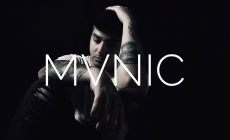
![Travis Scott Releases His First Single of 2019 [VIDEO]](https://www.guttaworld.com/wp-content/uploads/2019/10/Travis-Scott-performs-live-in-2019-230x140.jpg)


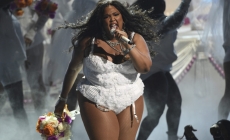




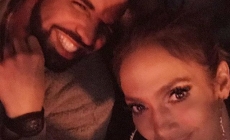



![Travis Scott Releases His First Single of 2019 [VIDEO]](https://www.guttaworld.com/wp-content/uploads/2019/10/Travis-Scott-performs-live-in-2019-80x80.jpg)




